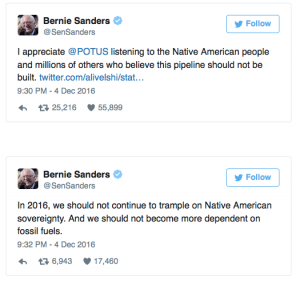Leftists throughout Latin America have long regarded the red and black flag of Sandinismo -- the political ideology centered on anti-imperialist beliefs and social equality -- as a symbol of hope, struggle, equality and liberation. In Nicaragua, the birthplace of Sandinismo, however, a new hue is threatening to push aside the colors of the Sandinista flag: fuchsia, the intense magenta that Nicaraguan President Daniel Ortega has been using in his political billboards. The hue has also swept through Nicaraguan fashion shows organized by Camila Ortega, daughter of the president.
The aesthetic shift away from the Sandinista black and red is a symptom of a larger political shift. Ortega, recently reelected to his third term in office as president, has been incrementally moving away from Sandinista ideals and toward supporting neoliberal land grabs and megaprojects, while developing a politics of political and social repression on the ground. This repression is expressed through a military occupation of the countryside, suppression of protest and border control.
Older ex-guerillas in Nicaragua now speak about Sandinismo with nostalgia and rage. Rigo del Calvario López, a weathered man who was a Sandinista guerrilla in the 1970s, told that for him being Sandinista meant learning from Gen. Augusto César Sandino, who between 1926 and 1933, guided the resistance against the United States military occupation in Nicaragua. Sandino "didn't want to be a landowner or president", the ex-guerrilla said. "We, within the original program of the Sandinista National Liberation Front included that we didn't want to be either businessmen or millionaires and less, presidents. What happened was the opposite: They became landowners, presidents, businessmen and millionaires. They only used the red and black flag to cover them -- that is not being Sandinista".
Allegations of Meddling in the Election
This November, the Mexican embassy in Nicaragua issued a warning: "We do not advise going near or being part of activities, meetings and protests of a political character" in Nicaragua. In less than three weeks, five Mexicans had been detained and a researcher had to leave the country immediately.
Nevertheless, in early November 2016 our reporting team -- made up of two Mexicans and a South American -- tried to enter the country legally to cover the presidential election.
We were subject to prolonged interrogation and an unjustified wait of more than seven hours in the immigration office on the border of Honduras and Nicaragua. On the wall of the office, the red and black flag of the FSLN accompanied a reelection campaign poster of Daniel Ortega with a fuchsia background. In the end, we were not given permission to stay in the country; rather we were given 12 hours to cross Nicaragua and arrive in Costa Rica.
During the long wait in the office, we identified an official advisory from the immigration office management stating, "Sunday, November 6, 2016, after voting provide the following information: place of employment, voting location and hour the vote was cast". Another order stated that employees had to work that day after voting, making it possible for immigration office managers to review the fingers of each employee to ensure they bore the stains of fingerprinting ink (proof that the employees had voted, since all citizens are required to leave a fingerprint while voting).
"It's a way of obligating public employees to vote and being that they are requested to state when and where they voted, each vote is easily surveilled and they can conduct a witch hunt", an immigration office employee explained, asking to remain anonymous for fear of punishment.
In spite of the general abstentionism in the election (including some members of the FSLN), Ortega was proclaimed the winner with 72.1 percent of the vote on November 7. This is the fourth time he has won -- now with this wife, Rosario Murillo, as vice president.
"How is it possible that there were 70 percent of the votes?" said Fátima Duarte, who was removed from her post as consultant for the FSLN because she participated in protests against Ortega politics. She said the FSLN is suspected of modifying the election results and buying votes through the provision of gifts. "None of us voted -- neither people in the countryside nor any of us poor people", she said. "Some people went to vote because they were given a pig, a chicken or a roofing plan -- a basic income program to improve housing for the poorest families".
The Color of Blood
Less than a month after the election, streets and bridges in Nicaragua were destroyed, deep ditches were opened in the middle of highways, 100-year-old trees were felled to create obstacles in the principal streets, anti-protest police were mobilized and road checks were set up by the national police. The Ortega government took these measures in anticipation of protests in Managua on November 30 and December 1, 2016, seeking to impede the movement of campesinos and Indigenous peoples from different remote rural communities. During that span, social movements from across the country were meeting to protest the construction of the interoceanic canal, conceded to the Chinese company Hong Kong Nicaragua Development (HKND). Protesters also came together with the goal of rejecting the electoral results that elevated Daniel Ortega to his third successive mandate.
"It is estimated that the canal would directly displace 350,000 people from their lands -- the majority of the displaced being campesinos and Indigenous peoples", said Medardo Mairena, a campesino from the Punta Gorda region, Bluefields municipality on the Atlantic coast of Nicaragua. HKND has, by law, a guarantee to expropriate the land considered necessary for the canal across the entirety of Nicaraguan territory. The Nicaraguan Canal is projected to be 278 kilometers long, 230 to 520 meters wide and up to 30 meters deep. It will be the largest infrastructure project in the world, three times longer than the Panama Canal.
The eastern region of the country has experienced the most intense repression. There, the route of the canal would cross Lake Cocibolca to connect the Atlantic and Pacific Oceans. The repression of protesters is protected by the Supreme Security Law that establishes any activity a threat against the state as decided by the executive branch of the government.
"We were leaving our territories toward Managua, but the government sent the military to obstruct traffic", said Mairena. "They downed bridges so that our caravan of trucks could not pass. We couldn't travel on buses because soldiers threatened the drivers that they would take away their concessions, so what we did was leave with the trucks we use to transport livestock and grains that we produce".
Beginning the night of November 28, officials and anti-protest agents from the National Police kept the zone militarized, with road checks strategically placed in the region. There were at least five stops between Managua and Nueva Guinea, and three military bases in the more strategic communities. Even with the military presence, around 1,000 people from different communities protested on November 29, a half mile away from the urban center of Nueva Guinea in a place known as the El Zapote Bridge, from where they continued toward Managua.
"The soldiers acted with violence, using tear gas canisters and rubber bullets", said Francisca Ramírez, a member of the national Consultation in Defense of Our Territory, the Lake and Sovereignty, from the community La Fonseca, in Nueva Guinea. "They also used firearms, AK-47s. At least 10 people were injured, four gravely, one of them (Pedro Guzmán López) was shot with a bullet in his stomach".
Using the argument that repair work was being done on El Zapote Bridge, on November 28, the government had taken out of use the only bridge that connects the communities to the city of Nueva Guinea. The organizers of the march against the canal informed us that police entered Nueva Guinea to detain their members when they were returning to their homes on November 30.
The town of El Tule was attacked with tear gas canisters in the center of the community. The inhabitants denounced the use of firearms by the police. The communities of La Unión, La Fonseca, Puerto Príncipe, El Tule, San Miguelito and El Castillo -- all located on the edge of the canal route -- suffered the most intense repressions, though the police-military intervention was extended to at least 13 districts in the country beginning November 27. Organizers of the December 1 protest said at least 102 people traveling to Managua were detained at road checks on the highways, according to them, in an illegal and arbitrary manner.
The organization, Front Line Defenders, related in a report that on November 30, 2016, in Nueva Segovia, Ana Patricia Martínez, director of the Foundation for the Promotion and Development of Women and Childhood "Blanca Araúz," was detained for three hours by police. The authorities also impounded her vehicle, which is owned by her organization. Martínez returned to a rural community where she was giving a workshop with women survivors of gender violence. When she asked why she was detained, the police responded that it was because she was helping transport people so that they could participate in the march.
The National Consultation in Defense of Our Earth, the Lake and Sovereignty denounced that there were at least 20 people injured, four gravely, and that 20 people had disappeared, on top of the innumerable people detained in the entire country.
Under Scrutiny From the Organization of American States
The arrival of the protesters coincided with the arrival in Nicaragua of the general secretary of the Organization of American States (OAS), Luis Almagro, who came with the mission to establish a dialogue with the diverse social sectors of the country over the controversial 2016 elections that made Ortega president for the third consecutive time.
Among the abuses that were attributed to the leader is the strangulation of what is called "democratic pluralism". In June, the Supreme Court removed the opposition leader Eduardo Montealegre from legal representation of the Independent Liberal Party, making Daniel Ortega the only important candidate in the running. The limiting of possible candidates through the courts was conducted on top of the elimination of both national and international elections observers.
On October 16, the OAS issued a communication about the electoral process in Nicaragua, claiming that the general secretary had sent a report to the Nicaraguan government regarding the events. The report is not public.
The government of Nicaragua "received the report with the disposition to work in a constructive table of conversation and exchange with the General Secretary of the OAS to collectively review the related topics", said the communication. Regarding the former, "The Secretary-General of the OAS and the Government of Nicaragua implemented a conversation mechanism and exchange about this", continues the communication. This was the first visit of the secretary after initiating the diplomatic call for "mechanism of conversation", but in reality, it puts Nicaragua under the lens of the OAS.
In this context, one of the objectives of the Caravana Campesina was to arrive in Managua and have an appointment with Secretary Almagro. But due to all the adversity, the Caravana did not arrive, but sent Francisca Ramírez to the capital, where she could denounce several issues with the general secretary of the OAS, who simply listened. "We explained all that we are going through", said Medardo Mairena. "The secretary still has not responded. We are still waiting a pronouncement in order to know if he took our situation seriously".
In the end, at a press conference, a reporter asked, "What are the political bodies that finance the campesinos?" Francisca Ramírez laughed and answered, "No one. We finance ourselves with the little we have. We are here because we want the world to know that this country isn't allowing us to express our discontent with the government that wants to displace us from our land".
A Colorless Politics
There is an effort within traditional political practices to attempt to reduce the experiences of social and mass movements to the logic of political parties. Many movements succumb to this logic, but one can see across Latin America that the anti-capitalist struggle grows for the most part in Indigenous and rural towns that are generally located far from urban centers. To defend their way of life is, in itself, anticapitalist. It is urgent for them to protect their territories, which means defending not only their way of life, but also the life of the Earth on which they live. This is not a romanticized vision.
In what is called the opposition is a liberal right fractured on various fronts, with a turbulent past due to its connections with the United States to develop a counterinsurgency against the Sandinista guerrillas. Regarding a struggle against the canal and against megaprojects that come coupled with the project, like tourist complexes and free-trade zones, they are bringing together campesinos across the country that claim they have no political affiliations with party politics. Medardo Mairena affirms that campesinos are organizing outside of party politics.
"We are autonomous", Mairena said. "The truth is that we are not accustomed to be in this kind of struggle. Our priority is [usually] to work the land -- that is our custom, our tradition. We see ourselves obligated to organize because no one was there to support us in this situation.... We are tired of so many lies, betrayal, people that say they represent us and they have left us alone. We don't believe anymore in those leaders, we believe in ourselves. We don't recognize the government".
The movement doesn't have external economic backing. Mairena said: "We campesinos mobilize with our own money. We've mobilized a number of people. A campesino sells a chicken, or a kilogram of beans, and in that way, we are fundraising money to be able to mobilize ourselves. That is our autonomy. In that way we move -- we don't have any economic backing from any national or international organization".
The National Consultation in Defense of Our Land, the Lake and Sovereignty has paid a high price for its critical position. Mairena said its members have been incarcerated and hospitalized, "just for protesting against the impacts that will be caused by this megaproject".
Hiding Behind Leftist Origins
Rigo del Calvario López, the former Sandinista guerrilla, told Truthout that the neoliberalist priorities of the FSLN and other self-identified progressive and leftist governments haven't been exposed because of their leftist origins. "This is a danger, because behind their political-economic programs are the same neoliberal politics, the continuation of the extractive projects that will keep capitalism on its feet", Lopez said.
Effectively, the progressive governments have adopted the same economic policies that have been dictated by the International Monetary Fund (IMF) and the World Bank, by the right and ultra-right parties.
After the armed conflict in Nicaragua in the 1990s, the IMF imposed drastic programs of stabilization and adjustment on the country. After losing the elections in 1990, the FSLN established its first agreement in September 1991 in the form of an 18-month "Stand By" program. After that, it implemented three other programs. The fifth triennial program was accorded with the IMF under Daniel Ortega's administration between 2006 and 2010.
Other conditions of these IMF programs included avoiding all recapitalization of state banks; creating privatization laws; finalizing the privatization of mining companies; applying measures of the "recuperation of costs" in secondary education; approving a law that would divide the Nicaraguan Electric Energy Company into separate entities that would execute the generation and distribution of energy and one that would permit the privatization of said services; approving the Law for the Hydrocarbons Sector to allow private companies to explore and exploit; and offering the private sector 38 remnant companies of the National Corporations of the Public Sector (CORNAP).
"We are going to continue working with the International Monetary Fund, the World Bank and the Inter-American Development Bank",
ORTEGA SAID IN HIS PRE-ELECTORAL CAMPAIGN IN 2006.
Before Ortega's reelection in 2016, the US House of Representatives unanimously approved the legal initiative known as the Nicaraguan Investment Conditionality, or the NICA Act. The principal objective of the law is that US representatives would oppose requests for credit from the Ortega government in multilateral financial institutions, such as the IMF, World Bank and the Inter-American Development Bank.
The law is still waiting approval with the Senate and President Obama. If it doesn't pass, the law would return to Congress and would have to be approved by President-elect Donald Trump. In the 120-day period after the approval of the NICA Act, the US Department of State and intelligence agencies in the country should present a report outlining how high-level Nicaraguan functionaries are involved in acts of corruption, including the Supreme Electoral Council and the Supreme Court of Justice.
"At the same time that the Ortega government is under the political lens of the OAS and the United States, especially for being internationally recognized as Sandinista, it is internally confronting a right that is allied with the United States in boycotting the government", said Lopez. "Meanwhile, the state maintains the development projects and economic policies, oriented by international institutions that injure and destroy the country and the life of the people, on top of using dictator policies".
A version of this report was published in Truthout.org






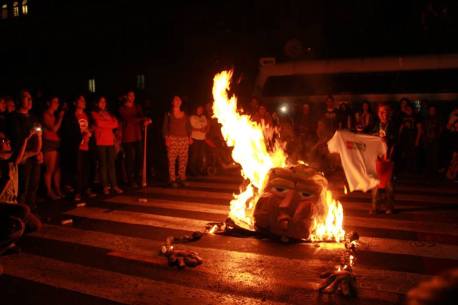


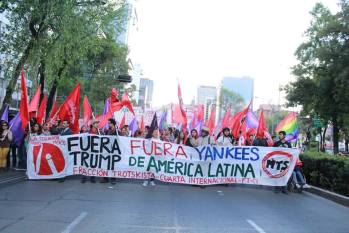


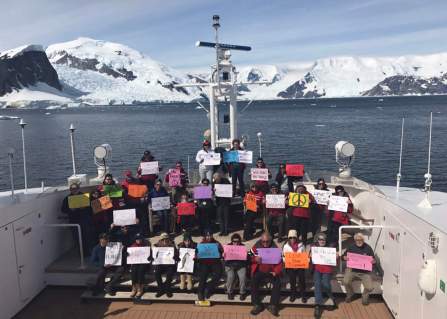
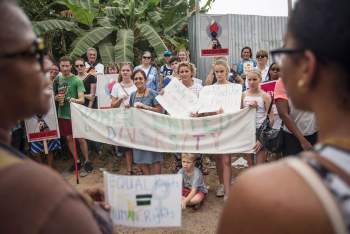


















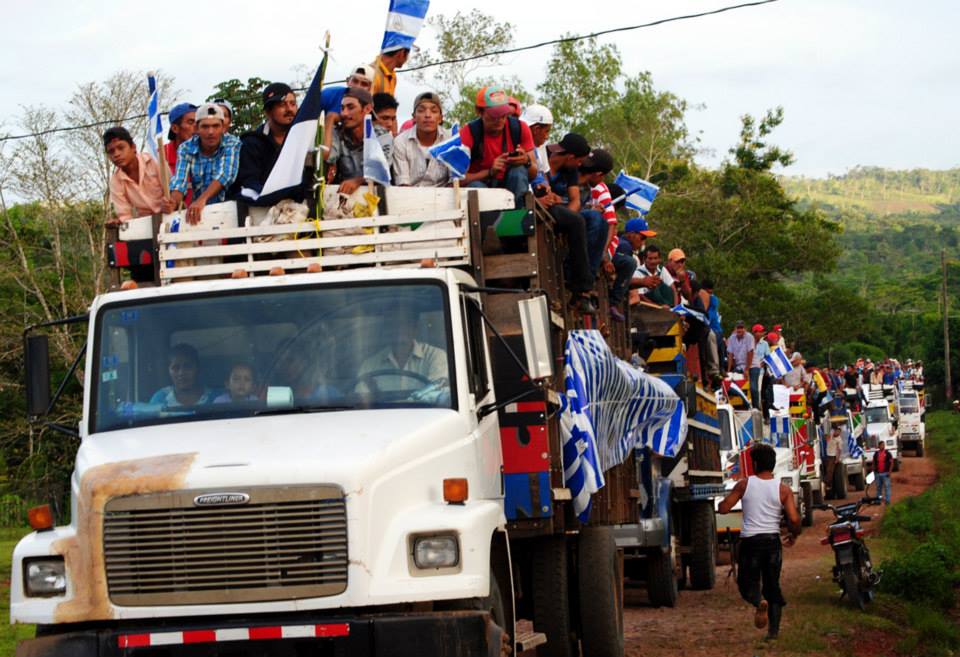

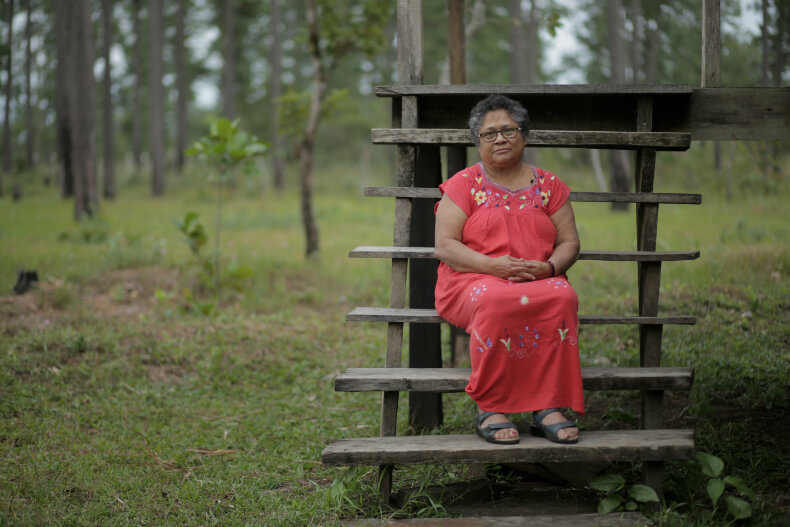
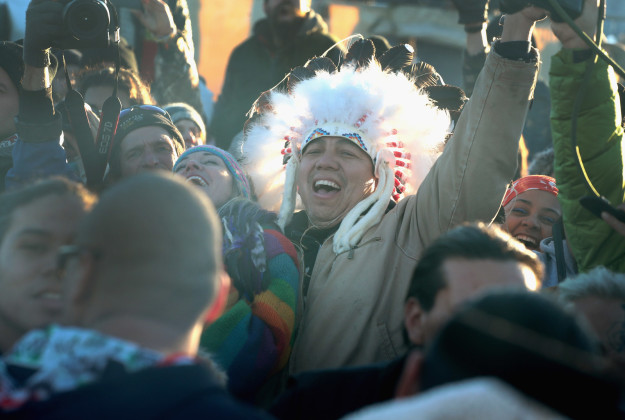
 Jim Watson / AFP / Getty Images
Jim Watson / AFP / Getty Images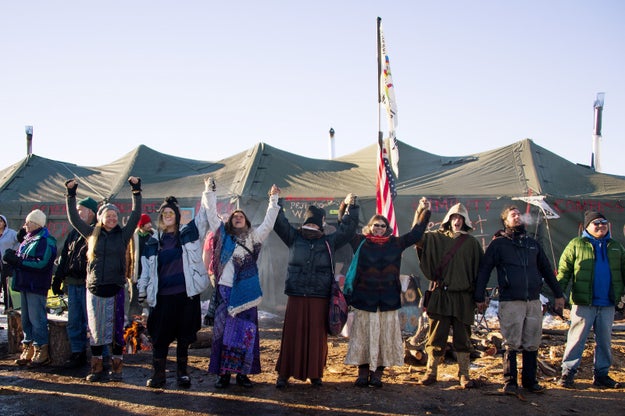 Jim Watson / AFP / Getty Images
Jim Watson / AFP / Getty Images